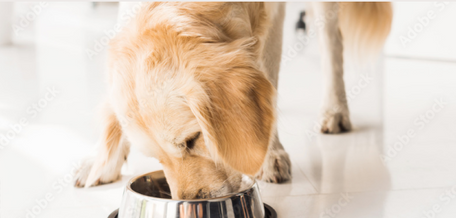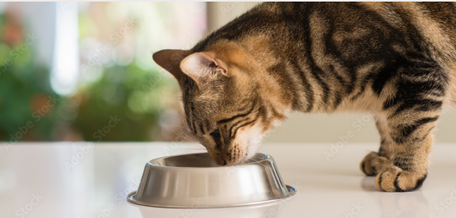Can My Cat Eat Raw Meat?
Cats are carnivores, so they should eat like one. Their bodies are designed to thrive on a diet primarily composed of meat. In recent years, many pet owners have explored switching their cats to a raw pet food diet to align with how they should naturally consume food. We want to take some time to explore the benefits of switching to a raw food diet for your cat. We believe this will ensure a smooth and healthy change for your feline friend!

Why Consider a Raw Food Diet for Cats?
A raw food diet for cats typically includes raw meat, bones, and organs, often supplemented with vitamins and minerals to ensure complete nutrition. Here are some potential benefits of switching to a raw diet. Make sure to check out our Feline Feast Introductory Package. We've designed this package to make your (and your cats) transition to raw pet food simple and stress-free!!
-
Improved Digestion: Cats’ digestive systems are optimized for processing raw meat, which can lead to better nutrient absorption and smaller, less odorous stools.
-
Healthier Coat and Skin: The high protein and fat content in raw diets can promote a shinier coat and healthier skin, reducing issues like dandruff or excessive shedding.
-
Increased Energy and Vitality: Many owners report their cats are more energetic and playful after transitioning to raw food, possibly due to improved nutrition.
-
Dental Health: Chewing raw meaty bones can help reduce plaque and tartar buildup, supporting better oral health.
-
Weight Management: Raw diets can be tailored to prevent obesity, as they are often free from fillers like grains or artificial additives found in some commercial foods.
However, switching to a raw diet requires careful planning to ensure nutritional balance and safety. Cats have specific dietary requirements, such as taurine, which must be met to avoid health issues.

Things to Consider Before Switching
Before transitioning your cat to a raw diet, keep the following in mind:
-
Nutritional Balance: A raw diet must be complete and balanced to meet all of your cat’s nutritional needs. Consulting a veterinarian or pet nutritionist is recommended.
-
Cost and Time: Raw diets are often more expensive than kibble or canned food. Be prepared for the investment.
-
Cat’s Health and Preferences: Cats with certain medical conditions (e.g., kidney disease) may require modified diets. Additionally, some cats are picky eaters and may resist the transition.
-
Veterinary Guidance: Always consult your veterinarian before making significant dietary changes, especially if your cat has pre-existing health conditions.
Steps to Transition Your Cat to a Raw Diet
Switching your cat to a raw diet should be done gradually to avoid digestive upset and increase acceptance. Here’s a step-by-step guide:
Step 1: Research and Choose a Raw Diet
Decide whether you’ll opt for a commercial raw diet or prepare homemade meals. Our Premium Cat Mix is formulated for optimal nutrition and easy digestion. It has a nutrient-packed 80-10-10 ration.
Step 2: Start Slowly
Begin by mixing a small amount of raw food (about 10-20%) with your cat’s current food. Gradually increase the proportion of raw food over 1-2 weeks. A sample transition schedule might look like this:
-
Days 1-3: 10% raw food, 90% current food
-
Days 4-6: 25% raw food, 75% current food
-
Days 7-9: 50% raw food, 50% current food
-
Days 10-12: 75% raw food, 25% current food
-
Day 13+: 100% raw food (if your cat is adjusting well)
Monitor your cat for signs of digestive upset, such as vomiting or diarrhea, and slow the transition if needed.
Step 3: Make It Appealing
Cats can be finicky, so make the raw food enticing:
-
Warm the food slightly to enhance its aroma (but avoid cooking it).
-
Mix in a small amount of your cat’s favorite treat or a bit of canned tuna to encourage eating.
-
Offer the food in a quiet, stress-free environment.
Step 4: Monitor Your Cat’s Health
During and after the transition, observe your cat for changes in energy, coat quality, stool consistency, and weight. Regular vet checkups are crucial to ensure the diet meets your cat’s needs. Bloodwork can help confirm that your cat is getting adequate nutrients.
Step 5: Maintain Proper Food Safety
To prevent contamination:
-
Store raw food in the refrigerator or freezer and thaw only what you need.
-
Clean all surfaces, bowls, and utensils that come into contact with raw food.
-
Wash your hands thoroughly after handling raw meat.
Common Challenges and Solutions
-
Picky Eaters: If your cat refuses raw food, try different protein sources (e.g., chicken, turkey, or rabbit) or textures (ground vs. chunks). Patience is key, as some cats take weeks to accept new food.
-
Digestive Issues: Gradual transitioning reduces the risk of upset stomachs. If issues persist, consult your vet to rule out underlying health problems or adjust the diet.
-
Nutritional Deficiencies: Work with a vet or nutritionist to ensure the diet is balanced. Commercial raw foods often include supplements, but homemade diets may require added vitamins or minerals.
Conclusion
Switching your cat to a raw pet food diet will be a rewarding choice, that will lead to improved health and vitality. However, it requires careful planning, patience, and a commitment to food safety and nutritional balance. Remember to transition slowly, monitoring your cat’s response, and seeking professional guidance. Check out what some of our cat customers have to say!
"My cat loves BJ''s raw chicken cat food. It was easy for her to transition to the new food. I appreciate the high quality, easy ordering, and ease of preparing her food. Great customer service." Karen H. (Google Review)
And do not forget to check out our Feline Feast Introductory Package. We've designed this package to make your (and your cats) transition to raw pet food simple and stress-free!!




















